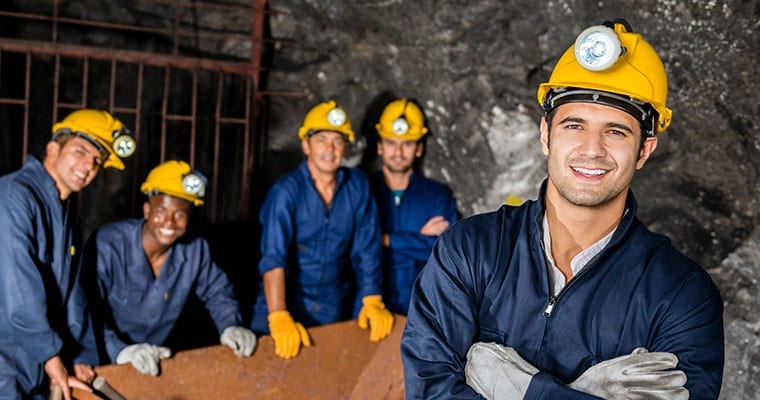
What is Respiratory Fit Testing?
Fit-testing measures the effectiveness of the seal between the respirator and the wearer’s face. There are two methods, however Humanomics performs Quantitative Fit Testing only.
- Qualitative – a pass/fail test that relies on the wearer’s ability to taste or smell a test agent. This type of test can be used on half-face respirators.
- Quantitative – uses specialised equipment to measure how much air leaks into the respirator. This type of test can be used on half-face and full-face respirators.
Why do Respiratory Fit Testing?
A respirator fit test is an essential component of your respiratory protection program.
Anyone who wears a tight-fitting respirator during the course of their normal work day – or anyone who wears one to perform emergency response activities – should be fit tested to make sure the facepiece provides an effective seal. That seal (or ‘fit’) is your assurance that your respirator will provide the proper level of protection when required. The fit test not only helps verify that you are using the proper make, model and size of respirator, but also serves as a training tool, a way to demonstrate proper use, and a time to assess respirator comfort.
If you wear additional PPE or prescription eyewear on the job, it should be worn during your fit test. Earmuffs, hardhats, visors, or even heavy clothing can interfere with the way your respirator fits. Your respirator fit test can help you understand how all of your PPE works together. Respirator users are also required to be clean shaven during their fit test and during respirator use.
How is Respiratory Fit Testing Done?
Quantitative fit testing uses a machine to measure the actual amount of leakage into the facepiece and does not rely upon your sense of taste, smell, or irritation in order to detect leakage. The respirators used during this type of fit testing will have a probe attached to the facepiece that will be connected to the machine by a hose.
Quantitative fit testing can be used for any type of tight-fitting respirator.
You must be fit tested before you use a respirator in the workplace, and you must be retested at least every 12 months to make sure that the respirator you use still fits you. You must be fit tested with the specific make, model, style, and size of respirator that you will be using.
Who is it for?
WH&S legislation obligates all employers to periodically monitor the health of every worker who are exposed to hazardous substances or materials during the course of their work, regardless of the duration of their employment.
Examples of occupational hazardous substances are isocyanates, lead, asbestos, crystalline silica, and 14 other hazardous dusts listed as hazardous. Humanomics is able to provide health monitoring and reports for workers, and for the employer’s confidential health monitoring database.
This includes occupations such as Quarry Workers, Coal miners, Spray painters, Concreters, Stone Masons, Kitchen Manufacturers, Welders, and exposed to hazardous substances such as particulate matter, fumes and xxxxxx?
Humanomics point of difference?
Humanomics are able to meet the needs of our valued clients through:
- The availability of two Portacounts throughout our clinics, resulting in quick turn-around times for bookings
- Staff who are fully trained to carry out Respiratory Fit Testing
- Our insistence on meeting industry standards and expectations through full compliance (it should be noted that Humanomics is ISO 9001 Accredited.
What equipment is used?
Quantitative Respiratory Fit Testing is conducted with the use of a Portacount. The Portacount works by measuring the concentration of microscopic dust particles in the ambient air and then measuring the concentration of those dust particles that leak into the respirator. The ratio of these two concentrations is called the fit factor. The filter cartridges stop essentially all the particles so anything that gets into the mask must have come through the face seal.
Benefits
The clear benefits for both Employers and Workers are:
- Education on the importance of Respiratory Fit Testing, and knowledge of the type and size of the most appropriate mask
- Reduction for Workers risk of Chronic Respiratory Illnesses and death
- Compliance in monitoring the health of workers
- Management of Risk, where Employers are able to assess and make a determination on whether the Worker is wearing the appropriate mask.
Legislative Requirements
Is fit testing mandatory for all workers wearing a respirator?
In harmonized states we fall under the Work Health and Safety Act 2011, and the Work Health and Safety Regulation 2011. The Act and the Regulation does not directly call up facial fit testing as a requirement, however the following guidance does:
Codes of Practice:
In How to Safely Remove Asbestos Code of Practice 2011 recommends that a fit test be conducted. This fit test is to be conducted in accordance with AS/NZS 1715:2009 Selection, Use and Maintenance of Respiratory Protective Devices.
Australian Standards:
In AS/NZS 1715 it specifies that users of any tight-fitting masks are to be fit tested prior to starting work and then at least annually after this.
Manufacturer Specifications:
Sundström (a maker of high-quality respirators) specifies that all masks must be worn in accordance with a written protection program, built in line with AS/NZS 1715- part of this protection program is fit testing.
Site Procedures
More and more companies are taking up fit testing (especially in asbestos removal) and they are utilizing employment agencies and workers who have conducted fit testing. This is beginning to set a benchmark for use and wearing of masks.

